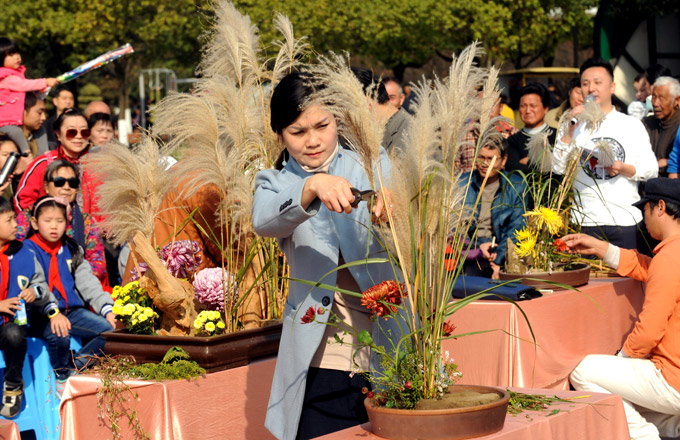

|
Solar power volunteers (two from right) talk with Tibetan residents. |
In his traditional Tibetan home 5,200 meters above sea level in Dingri county, about 40 km from the Mount Qomolangma base camp, Chagyab Sangri, who lives alone, used to cook and stay warm by burning about 2,000 kg of cow dung a year.
But on January 9 this year, Sangri, 45, moved into a new house powered by solar energy that enabled him to stay warm longer in a cleaner environment.
The change was driven by a project to improve the living condition for Tibetans sponsored by the Settlements Improvement Project for Tibetans and supported by US-based chemical giant Dupont, Tsinghua University, China National Engineering Research Center for Human Settlements and the Tibet autonomous region environmental protection bureau. More than 100 volunteers from Dupont China and 40 mountaineers from Beijing, Shanghai, Guangzhou of Guangdong province and Chengdu of Sichuan province also joined in the effort
They worked at the foot of Mount Qomolangma, researching local residents' living habits and conditions in three counties (including Dingri). In addition to Sangri's new dwelling, 20 other households have been selected for solar makeovers and are expected to be finished by May.
High on the list of priorities was developing solar energy systems designed for Tibetan homes.
Tibetans traditionally use wood and cow dung for home heating and cooking fuel but the low-heat from cow dung didn't maintain steady warmth in Tibet's harsh cold temperatures, said an official with the Tibet autonomous region environmental protection bureau.
Mount Qomolangma's region has about 3,000 hours of sunshine annually, potentially a large energy source, but it was going waste due to a lack of solar technology, Baqiong told China Business Weekly.
"So one key task for the volunteers was to develop a wider range of solar energy options to help locals take advantage of the natural resources and improve their lives," Baqiong said.
Zeng Yan, architect of Sangri's solar-powered house, explained that after six-months of research, they found that the special structure of the buildings could expand the utilization of solar energy and improve the indoor temperature.
"We mainly employ technologies to collect the heat from solar energy in the home design. Especially in summer, the house can avoid extra heat collection by fending off direct sunlight," Zeng said.
In addition, a large expanse of solar energy storage glass was installed on top of the house.
"I am not only living in a warmer house, but I can also get electricity, which is made by solar energy," Sangri said.
But to Sangri's surprise, the new house looks quite similar to his former home because the buildings' design also took the local living habits into account.
The new house was built with clay bricks, which are traditionally used for Tibetan construction and also possess good heat retention quialties, Xu Jun from Dupont China said.
"There will be more clean energy-based products and construction materials used in the area," said Xu.
Xu added that in the second phase of the project, through 2009, the research team will be exploring the use of a wider range of natural resources, such as wind power and biogas energy.
"What we have been doing is not building a 'museum'," said Xiao Wei, a volunteer from Tsinghua University. "We are engaged in truly improving local residents' living conditions and making better use of the natural resources."
"There will more people like Sangri to enjoy warmer, brighter and cleaner lives," Xu said.
(China Daily 01/19/2009 page8)













